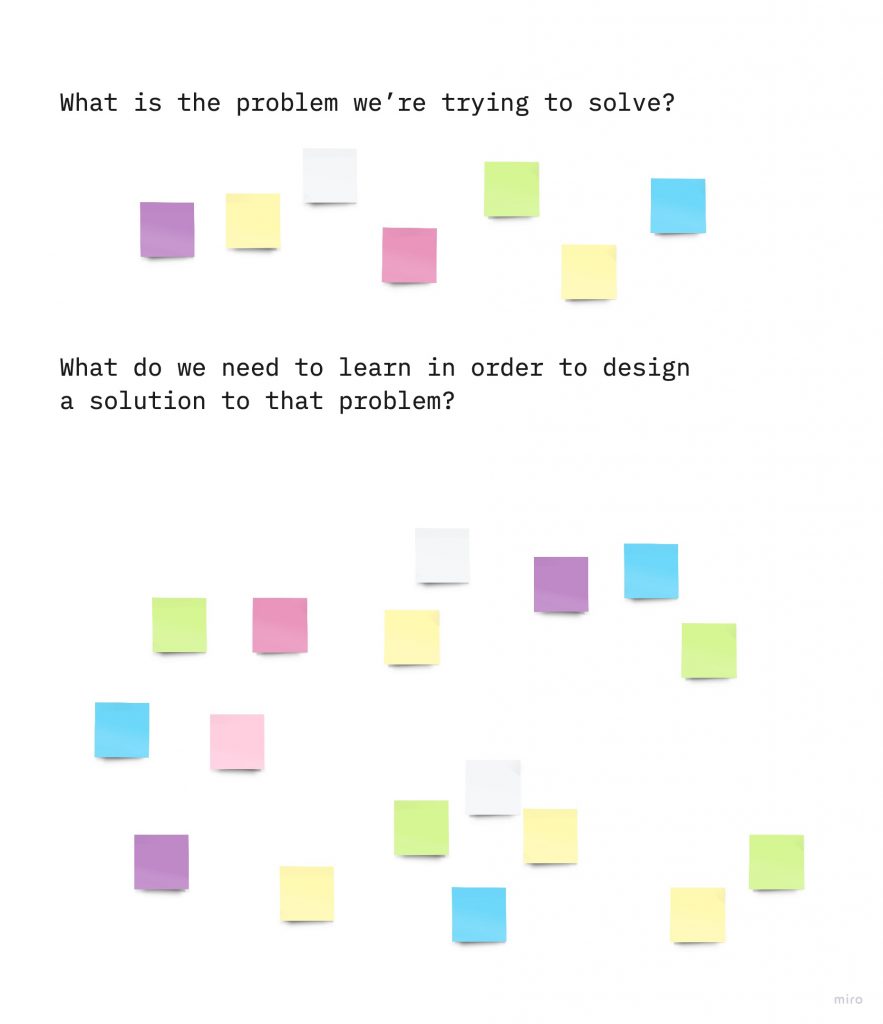Research planning is crucial to step into the project on the right foot. I don’t intend to lay out the details of research planning in this post but after being part of various design research teams, I’ve recognised a tendency among designers to assume that primary design research is equivalent to field research and customer interviews: In many cases, when teams plan the research, they just jump to discussing the target groups to interview, and question to ask them and not consider any other methods at all.
I acknowledge that other research methods may not be as fruitful, deep, or interesting as field research or interviews with target users, but they still exist and they may help with filling some gaps in the team’s understanding of the subject matter.
For me, a good alternative approach is to take a step back first and start with mapping out all the topics and sub-topics framed as questions to be explored within the research. Only after that, teams can then start defining the methods to use to address those questions, not the other way around as in the usual case.
Below is a step-by-step explanation of how this could work:
1-) As a team, after defining the research problem, start thinking about all that needs to be learned and understood for responding to the problem at hand.

2-) Define the methods and proxy methods
Cluster all the questions/topics that come out of the conversation on the wall (or on your preferred virtual collaboration tool). This is the first affinity mapping exercise I usually do with the whole team.
Going over the clusters on the wall one by one, discuss with the team what would be the ideal research method to explore that subject. If it can be addressed with a single method, great. If not, then discuss alternative methods, break down the problems, and find the best possible solutions that may or may not involve a proxy method or a mix of methods.

3) Initial Assumptions and Hypothesis
If you have more time, you can also discuss with the team, the current gut feelings people have with regard to the research questions. This is useful to open up and discuss all the preliminary ideas, previous experiences, and the initial biases the team begins with.
4-) Use the emerging details to evolve project plan.
(This step doesn’t have to be done with the whole team)
Based on what comes out of the exercise, the team or people with planning responsibility probably have a better idea about what needs to happen in the coming days with regard to research activities.
My experience is that doing this type of exercise before starting the research really helps to clarify what we are really looking for in the research, helps team members to align with the project and research goals, and identify gaps from the beginning. And it’s a good team building activity, too. Hope you find it useful as well.